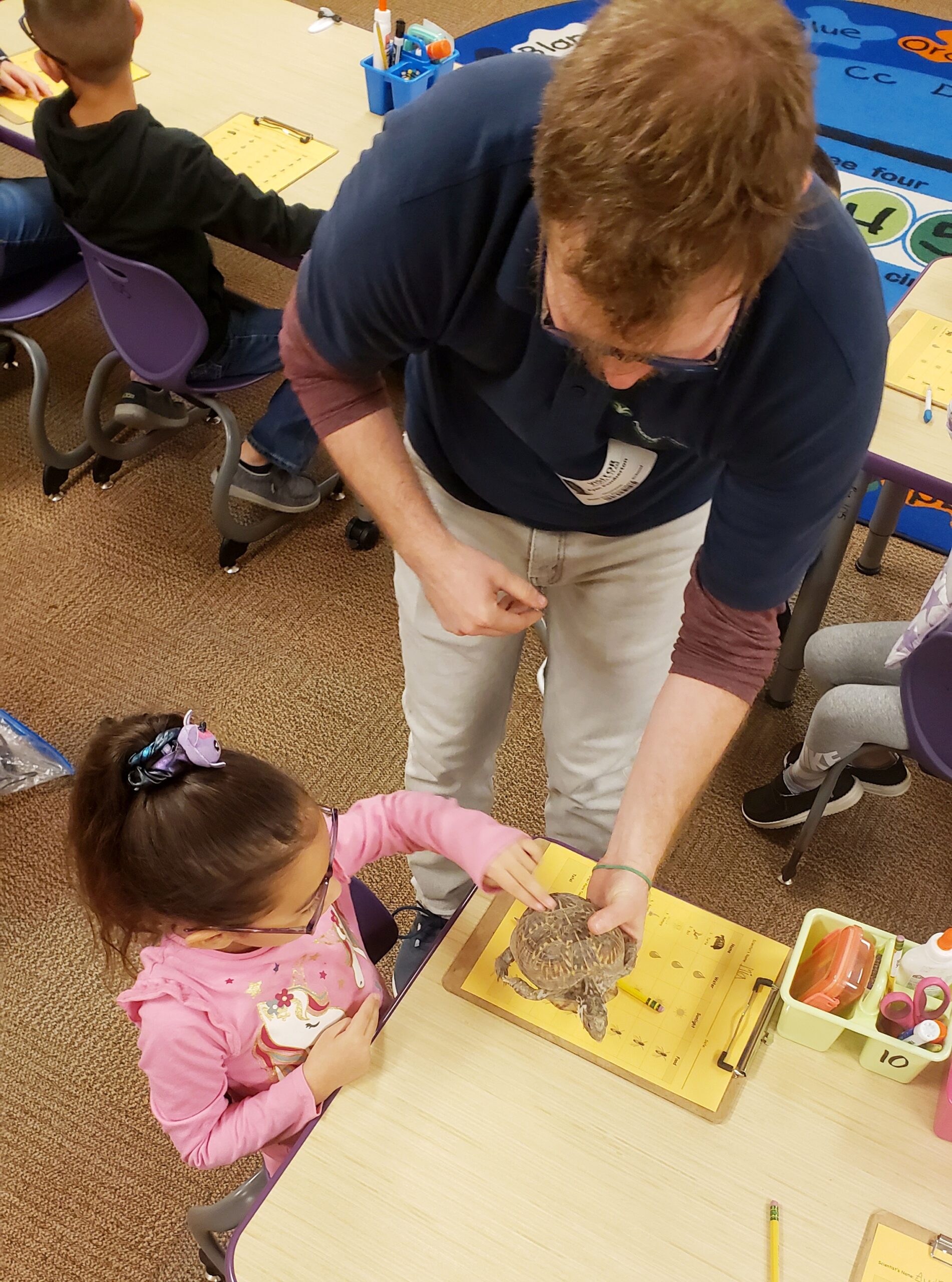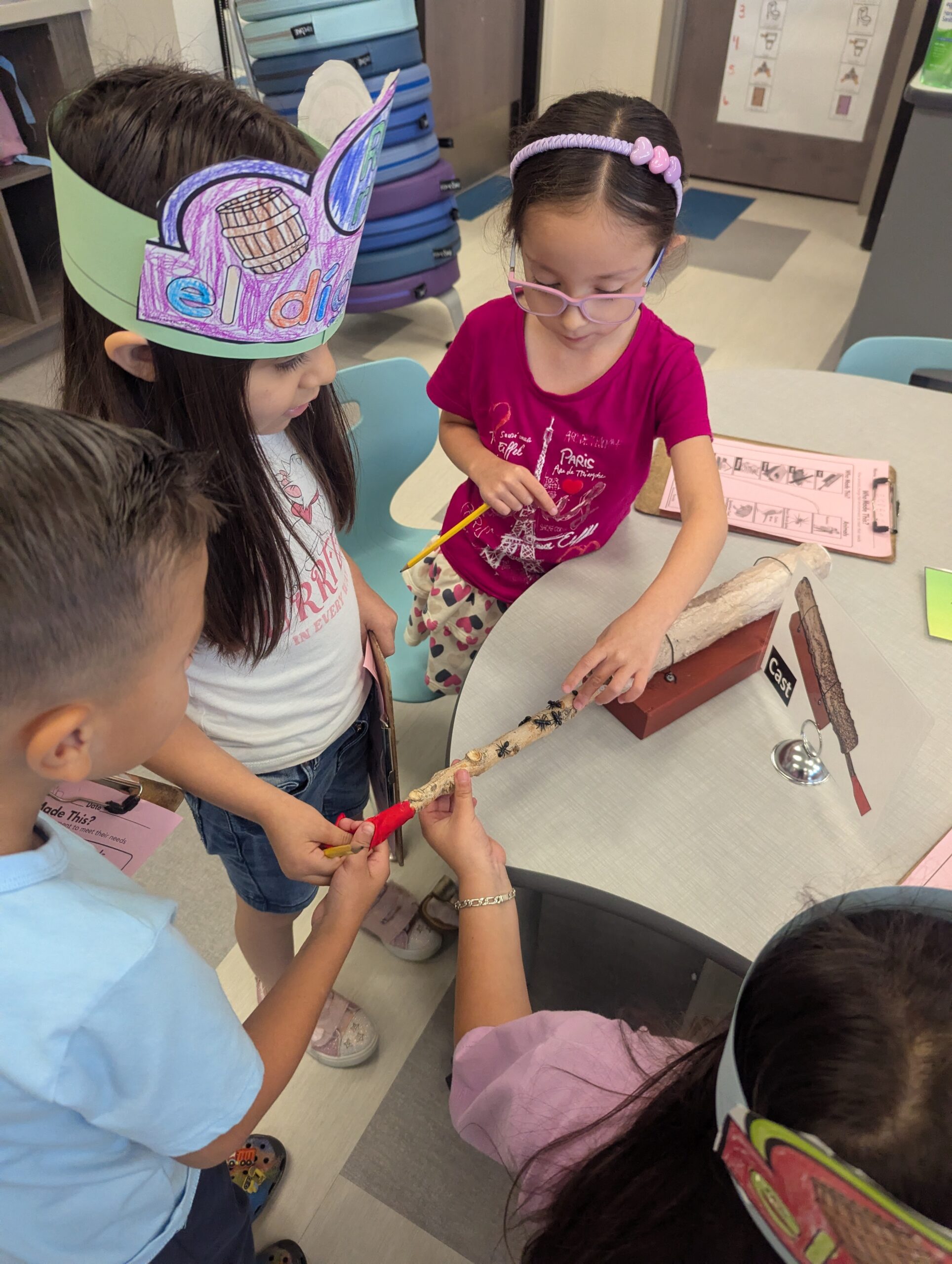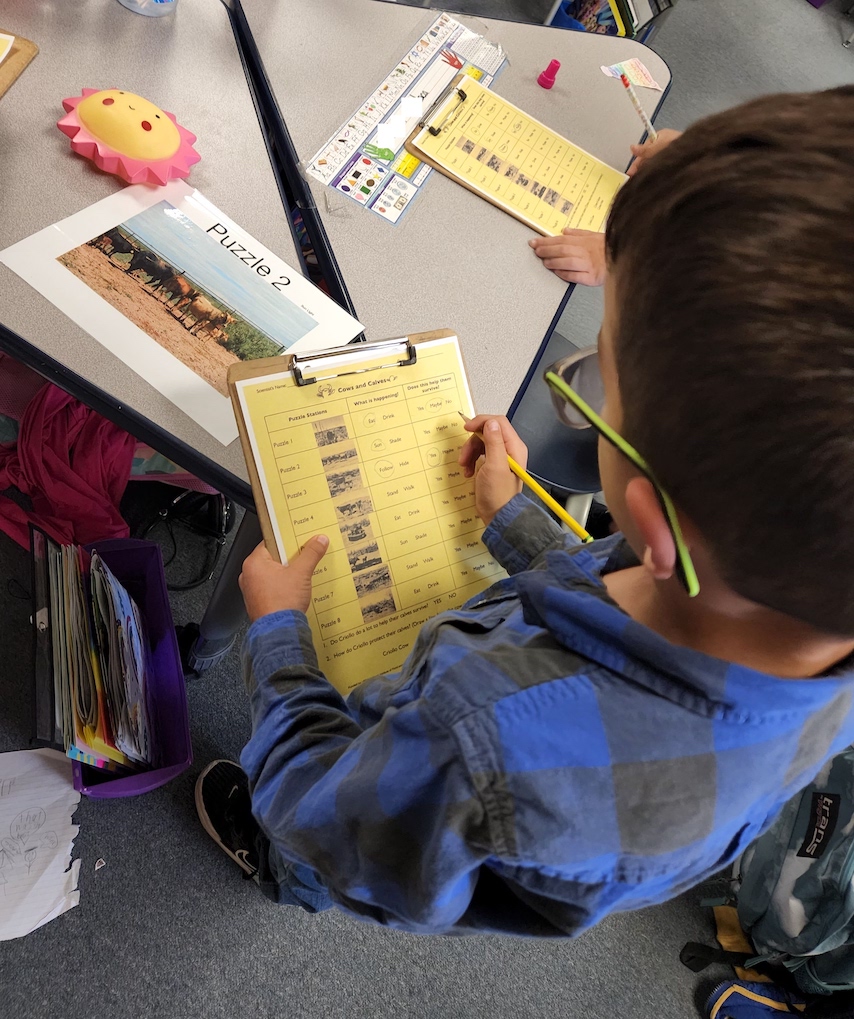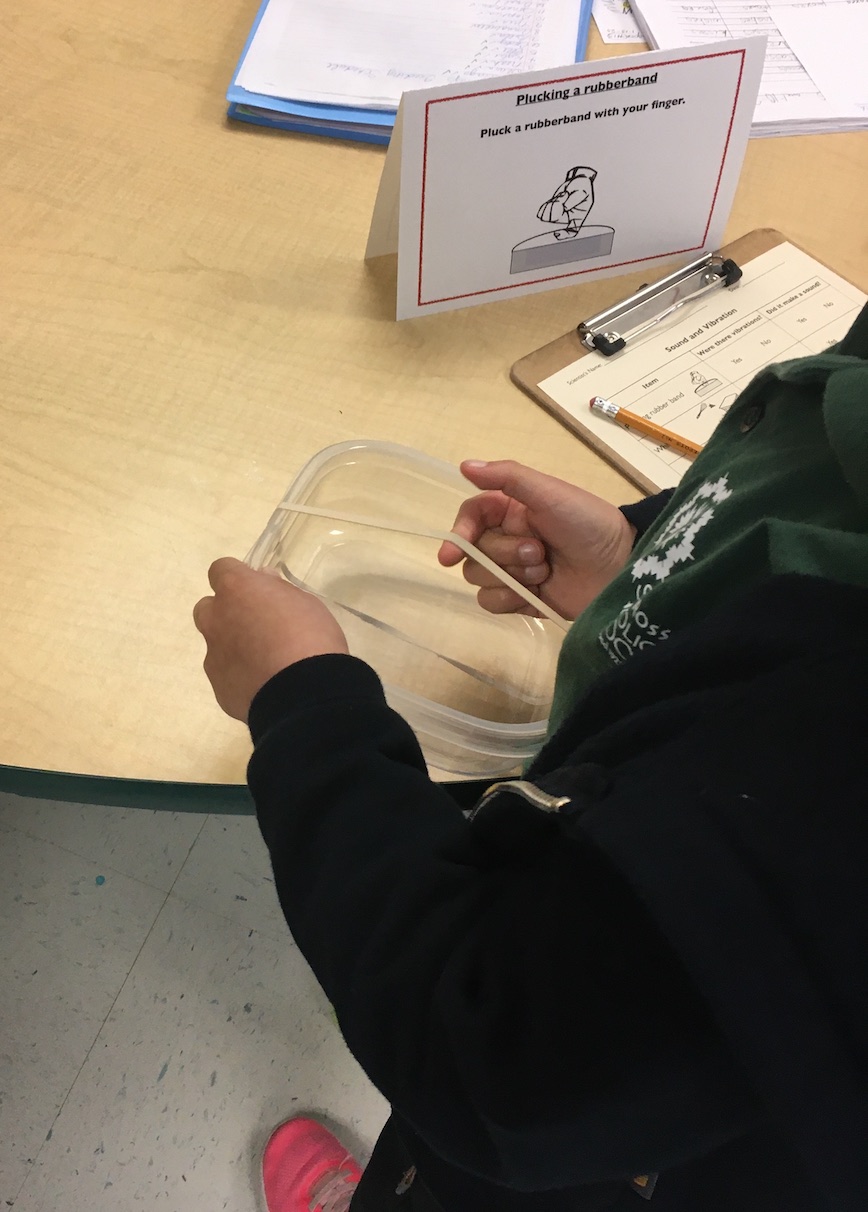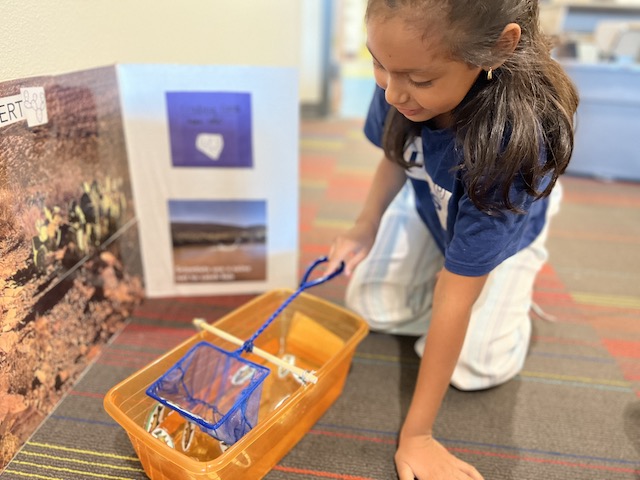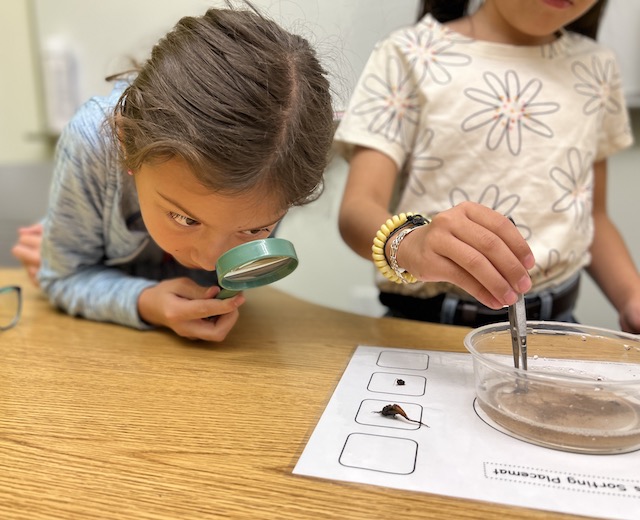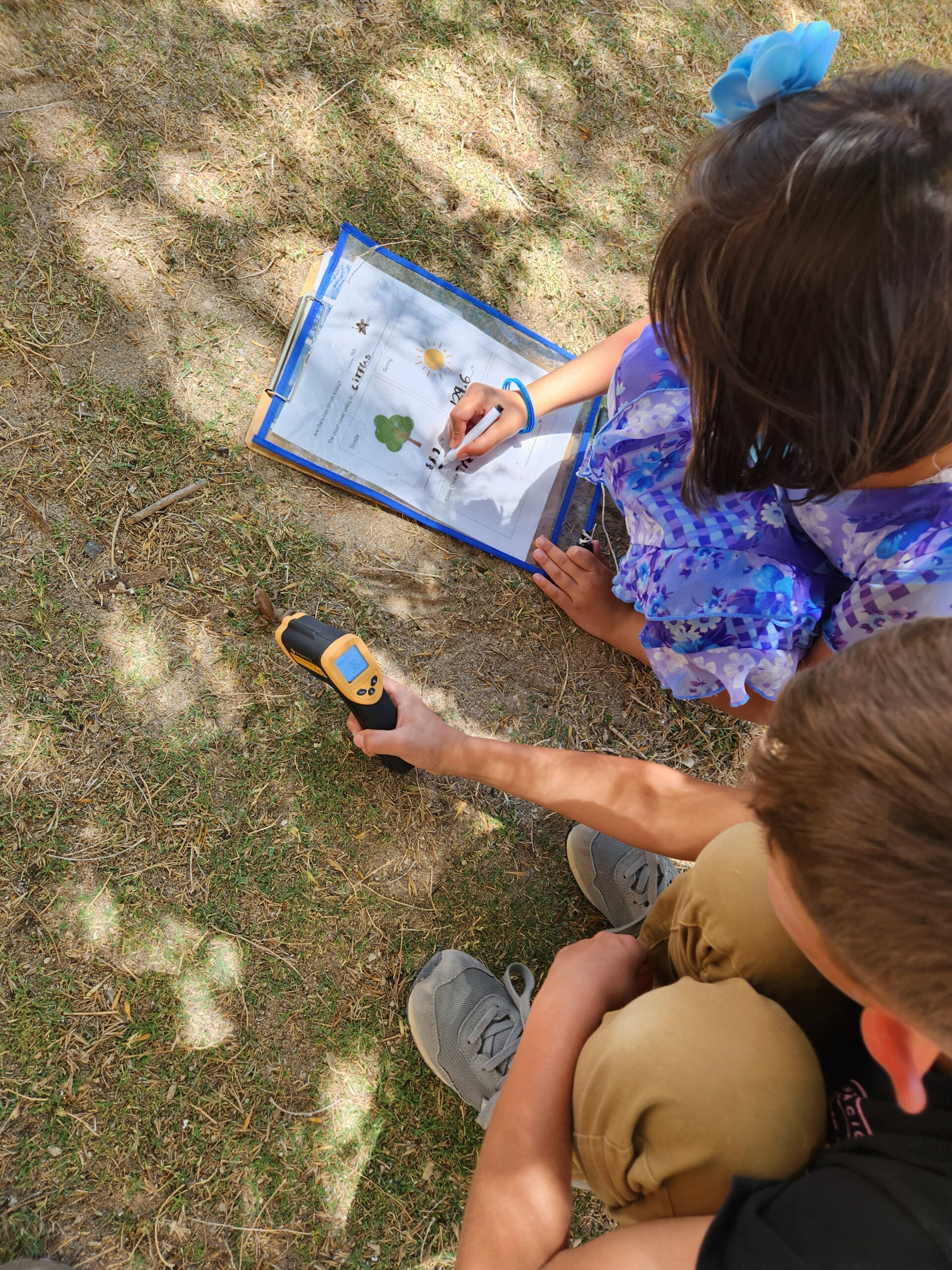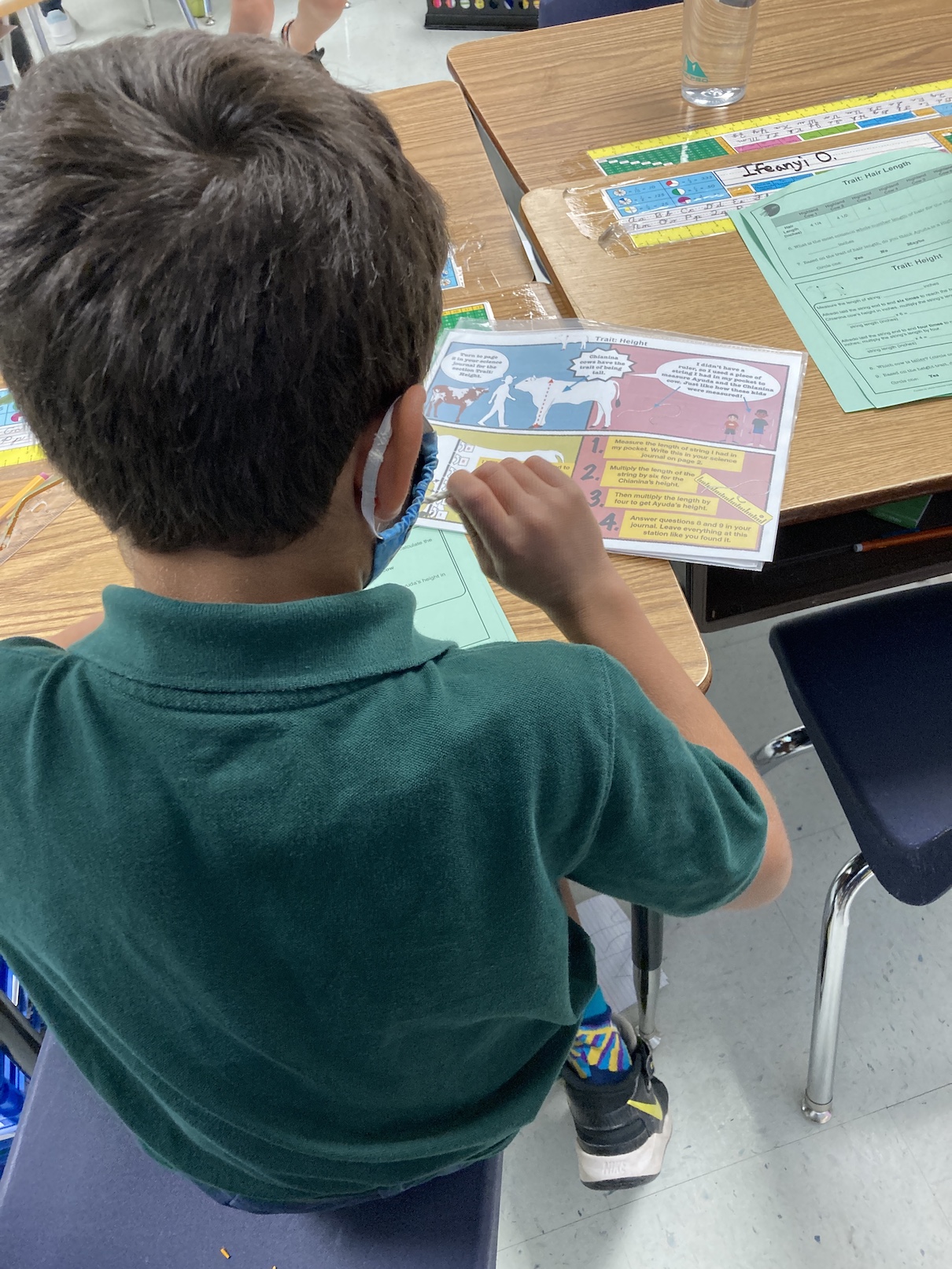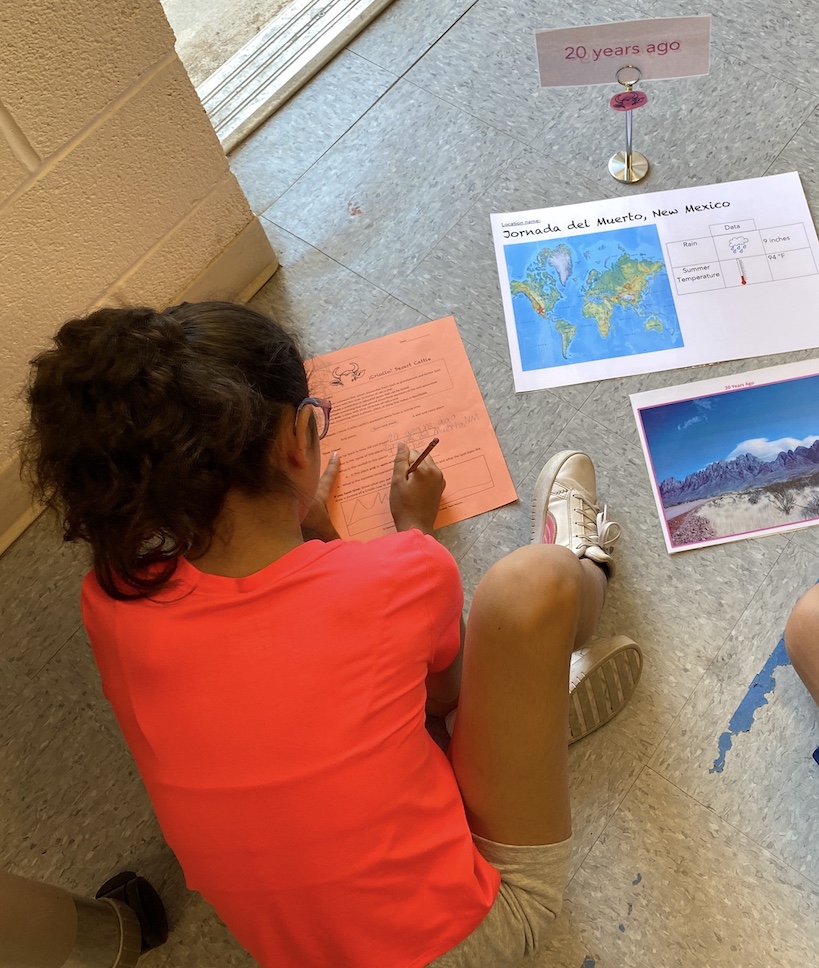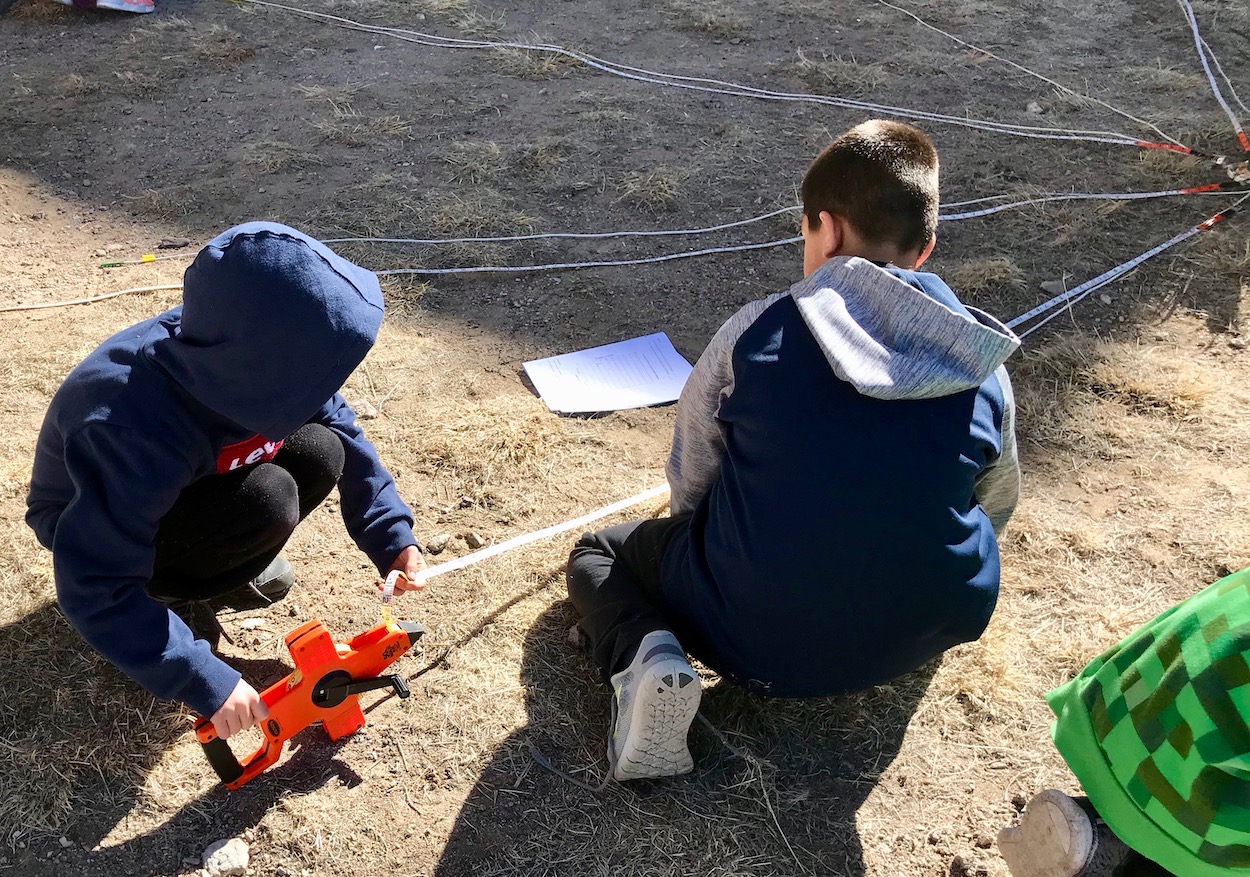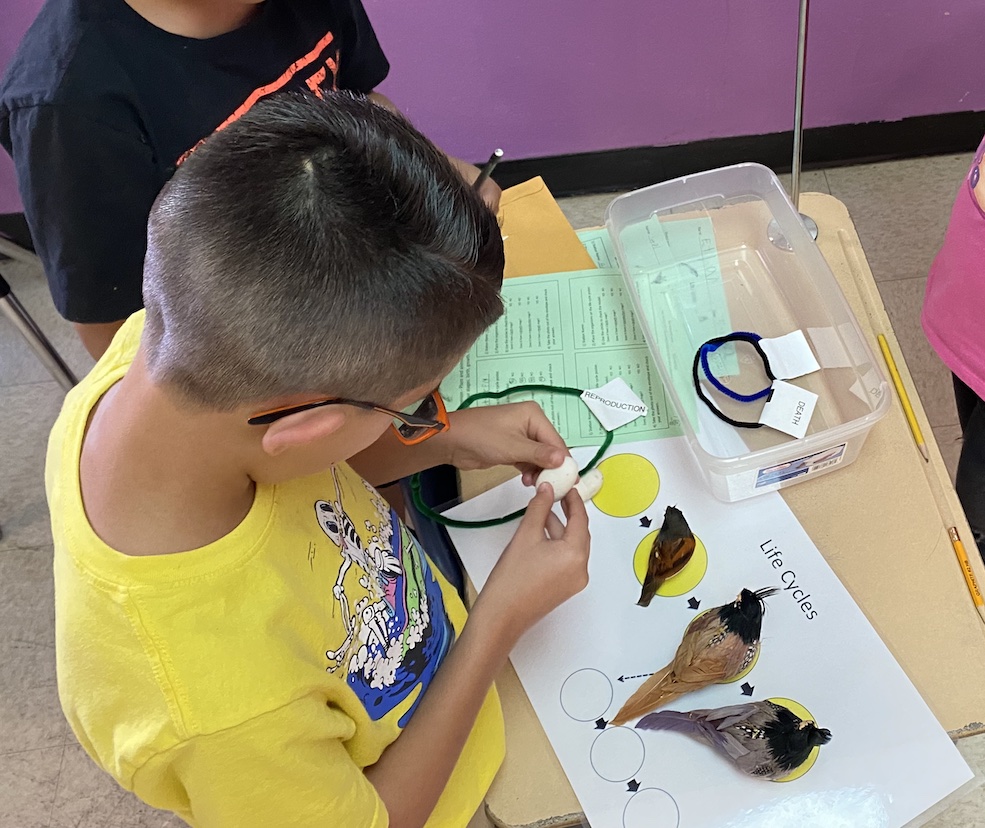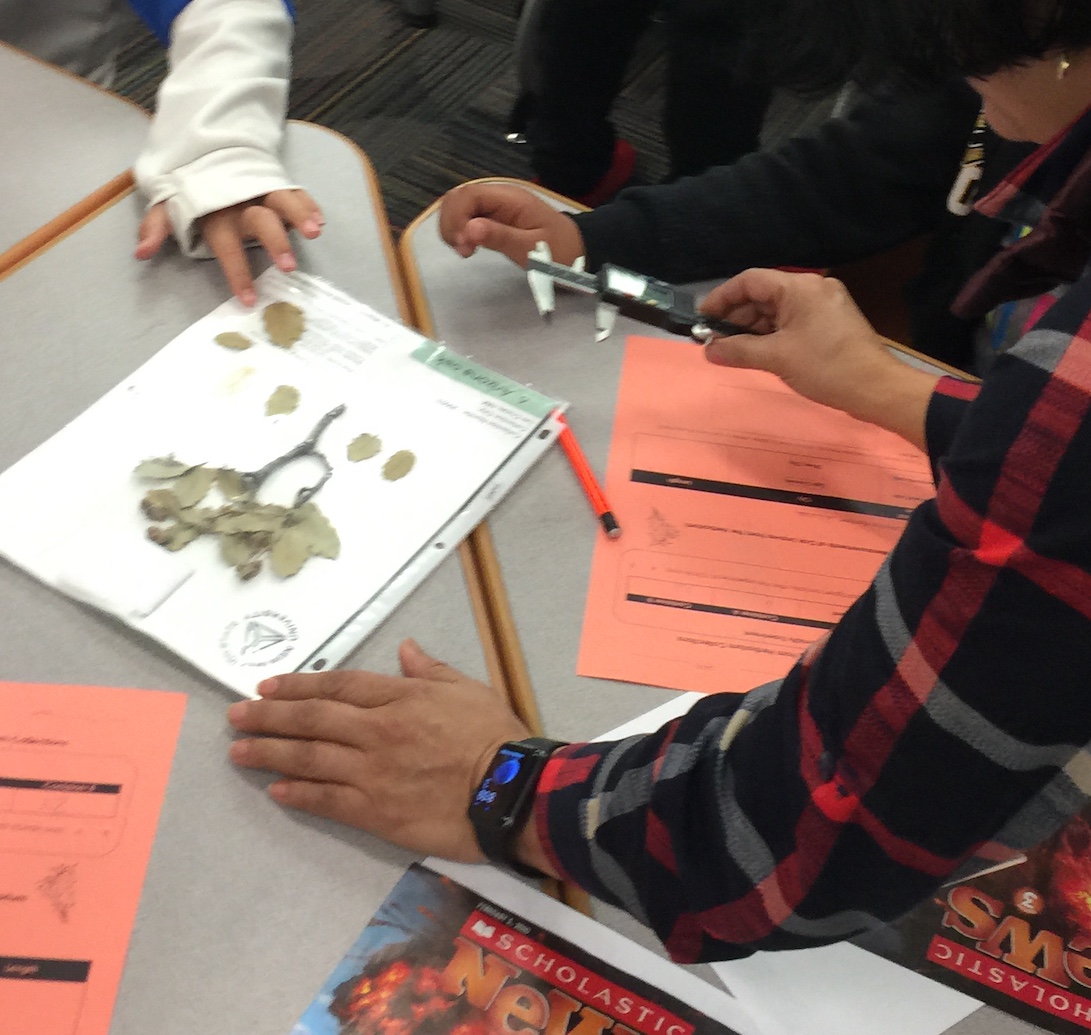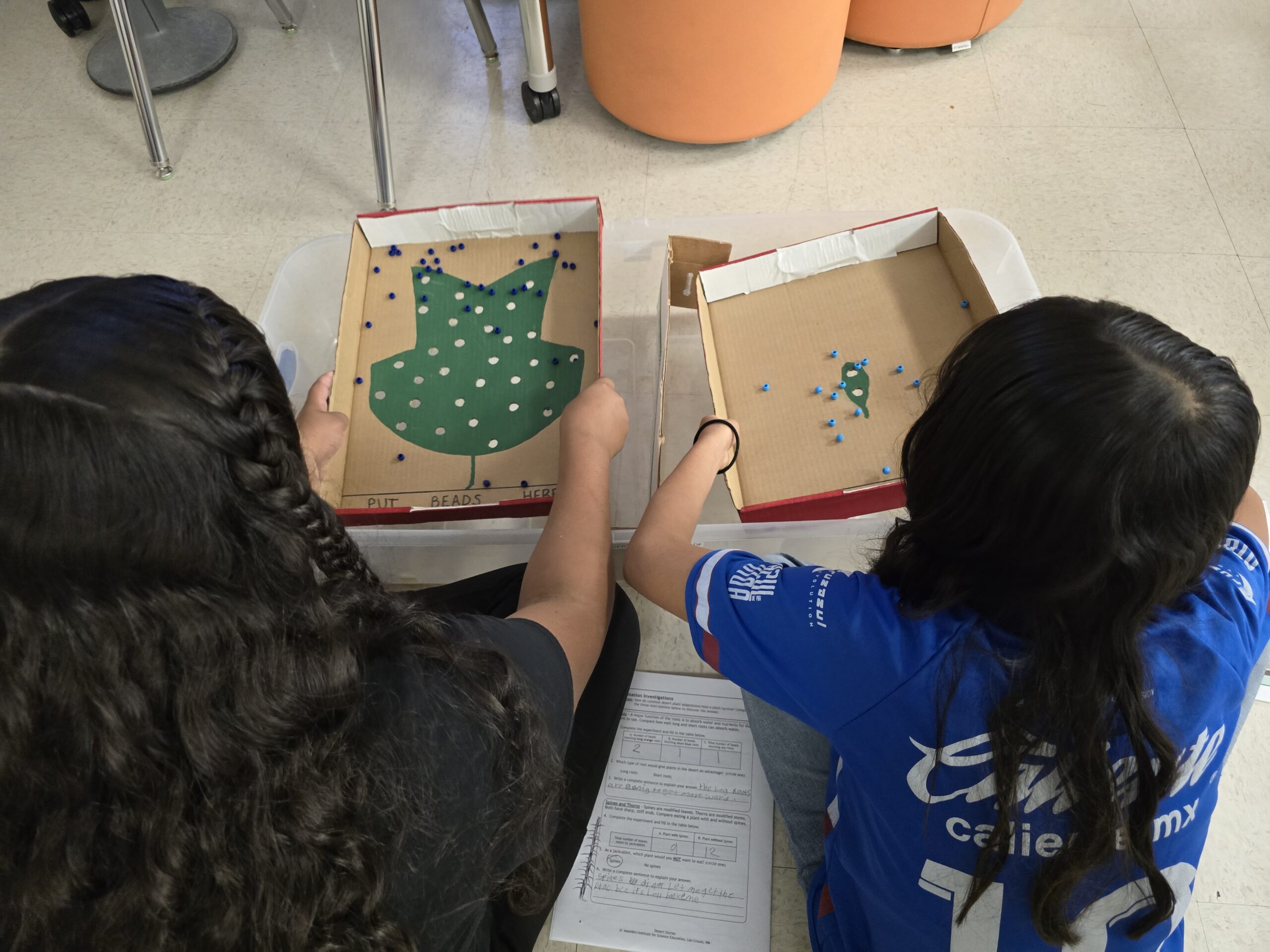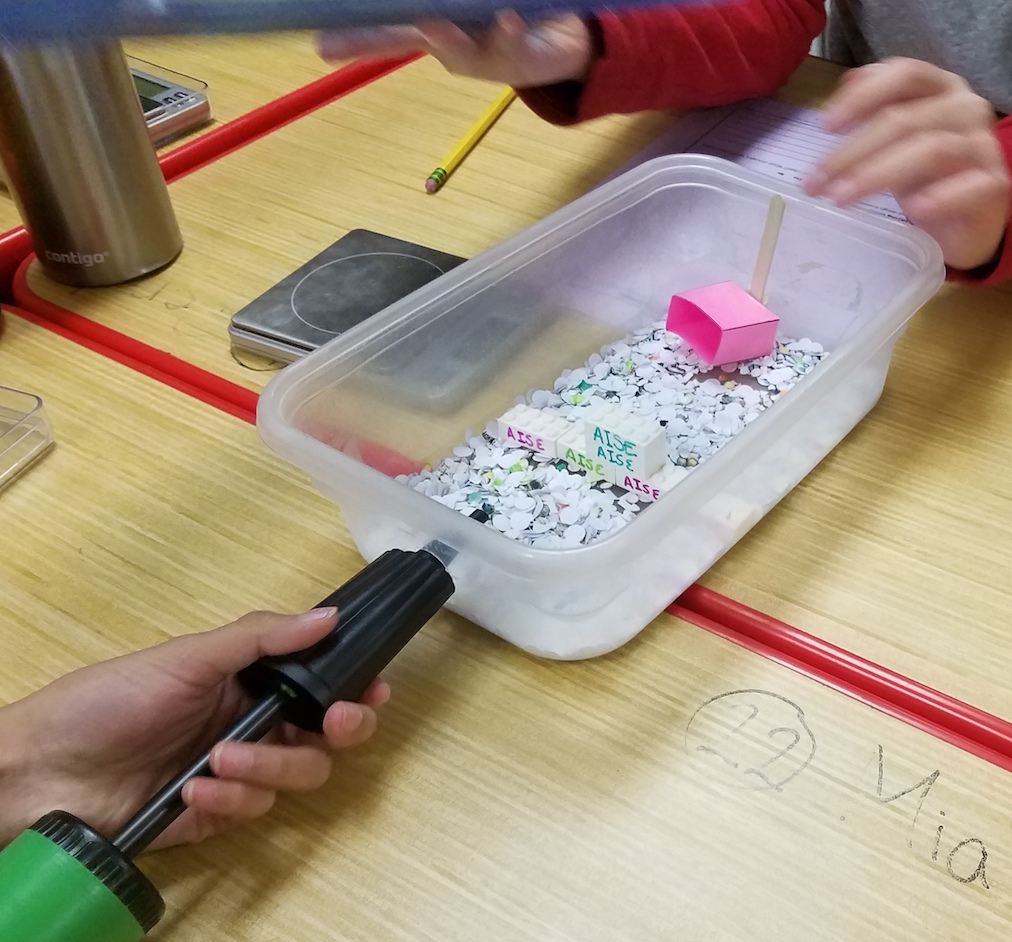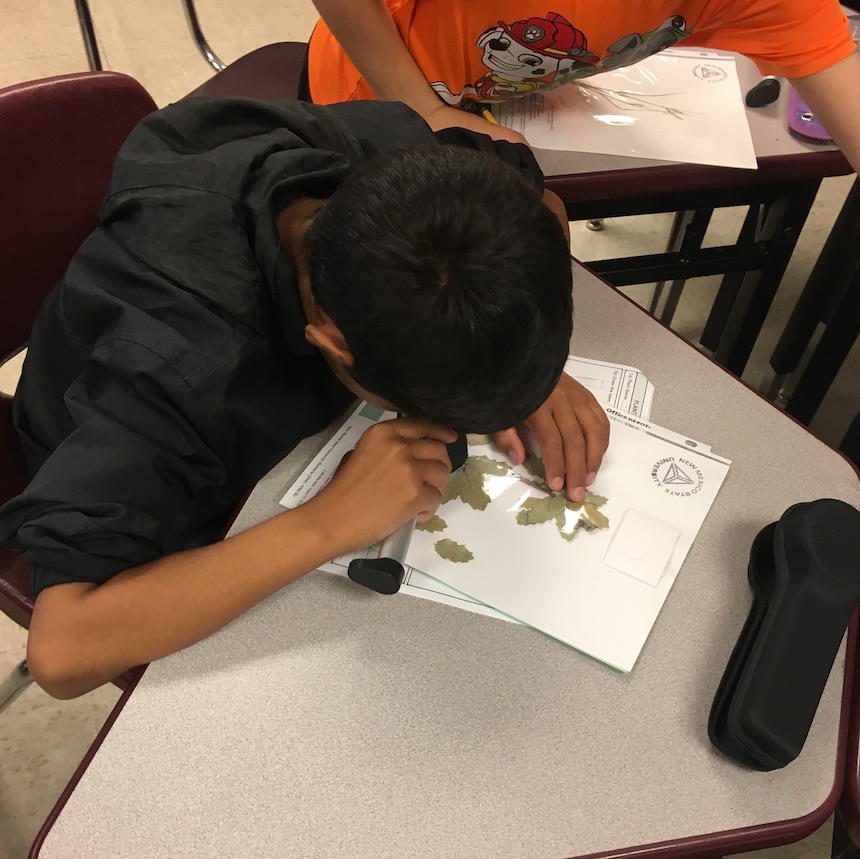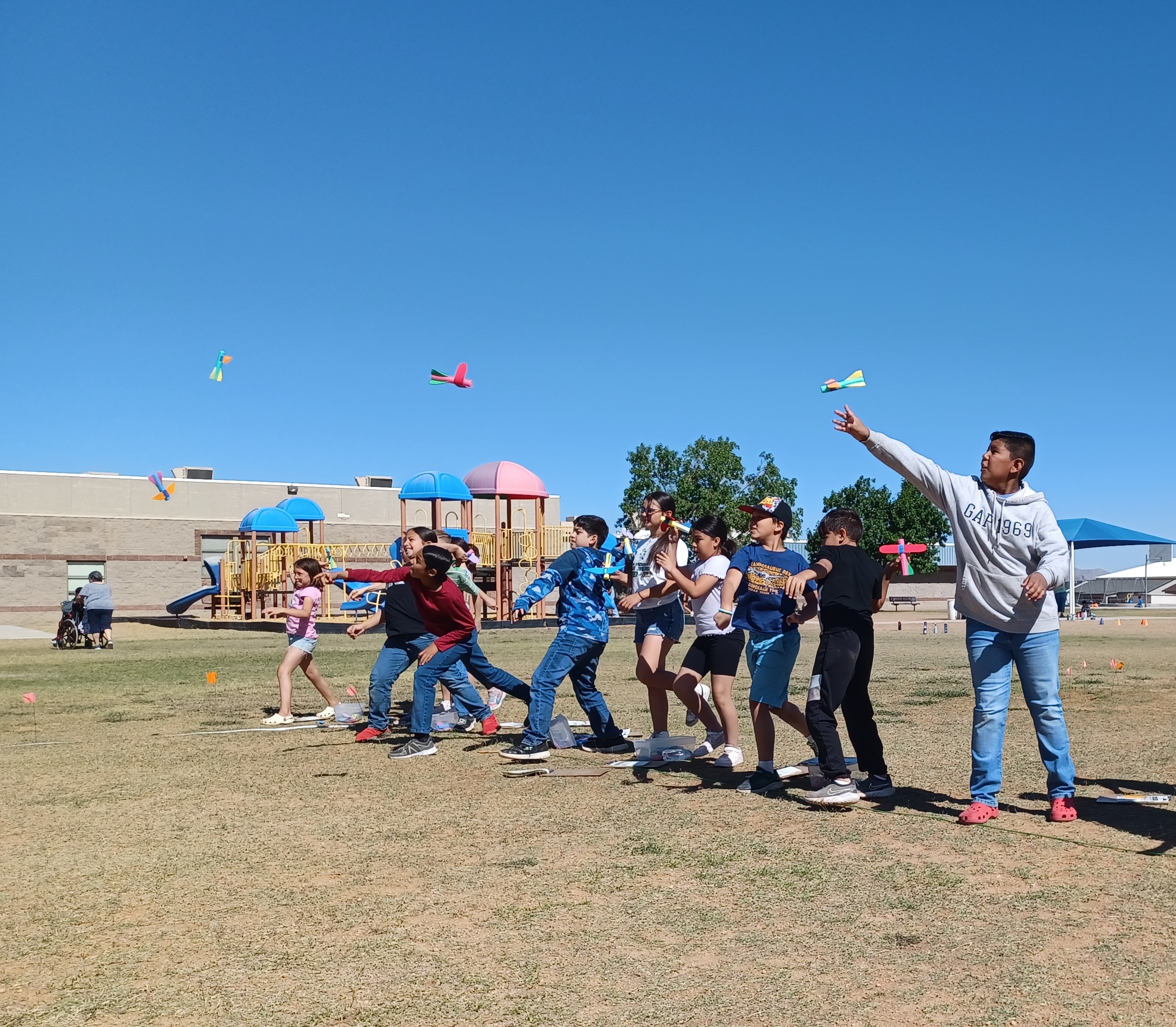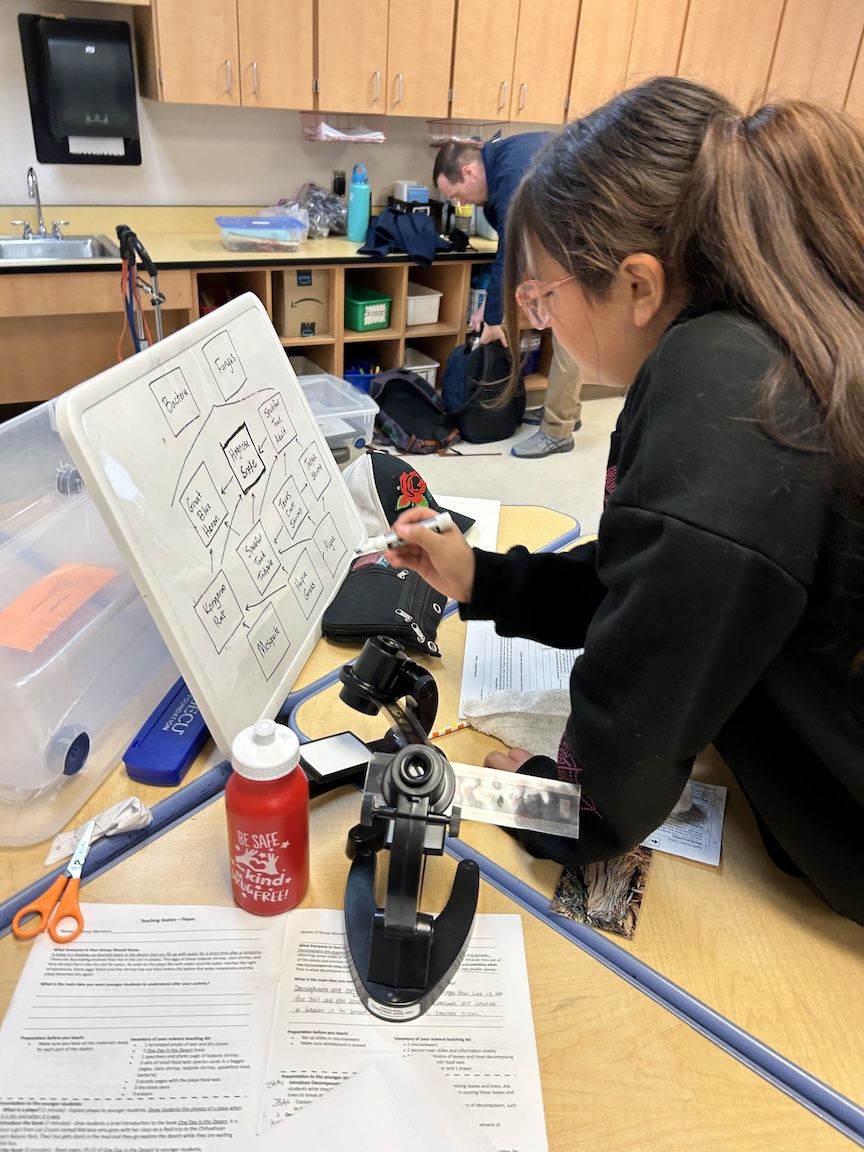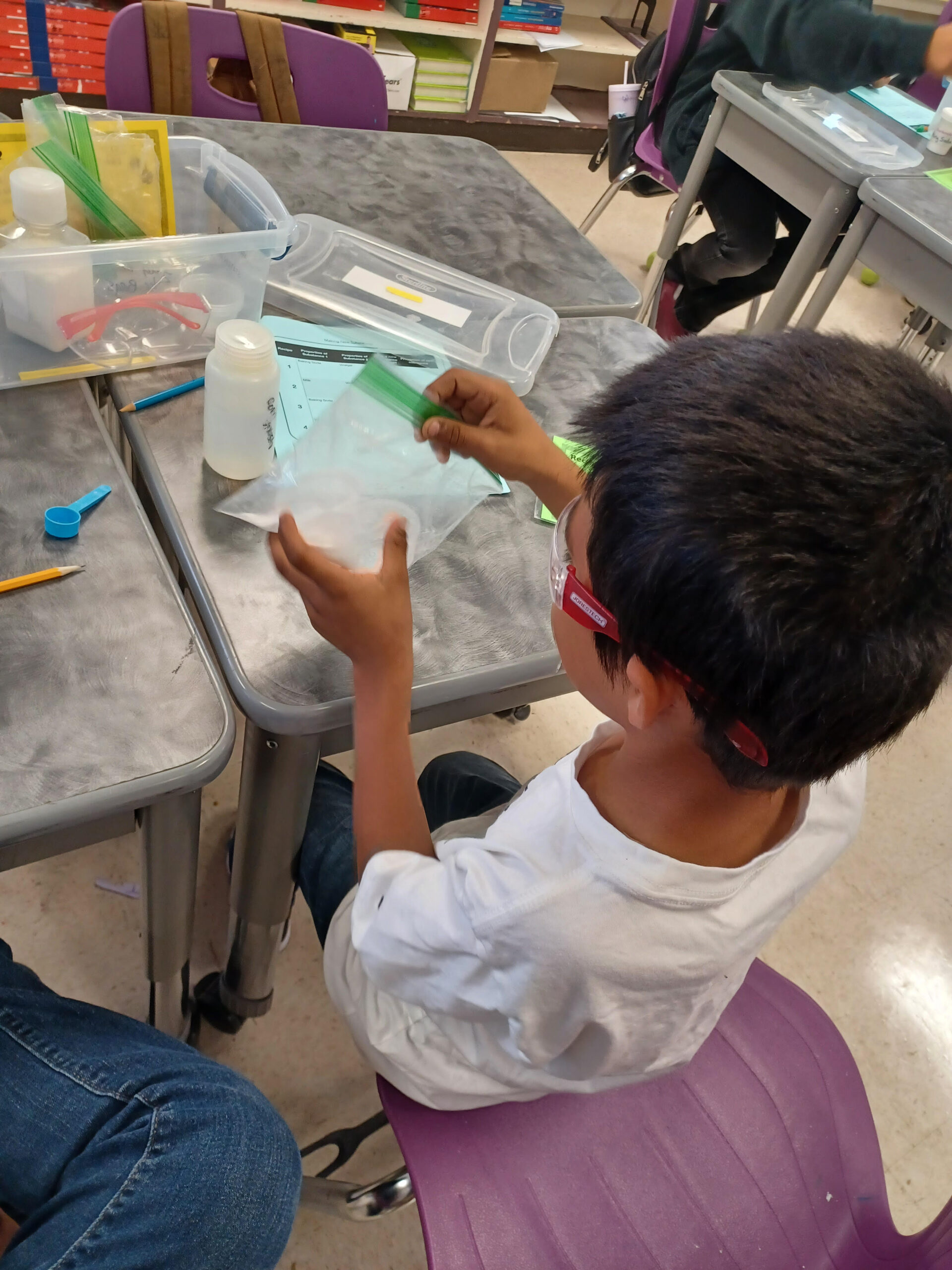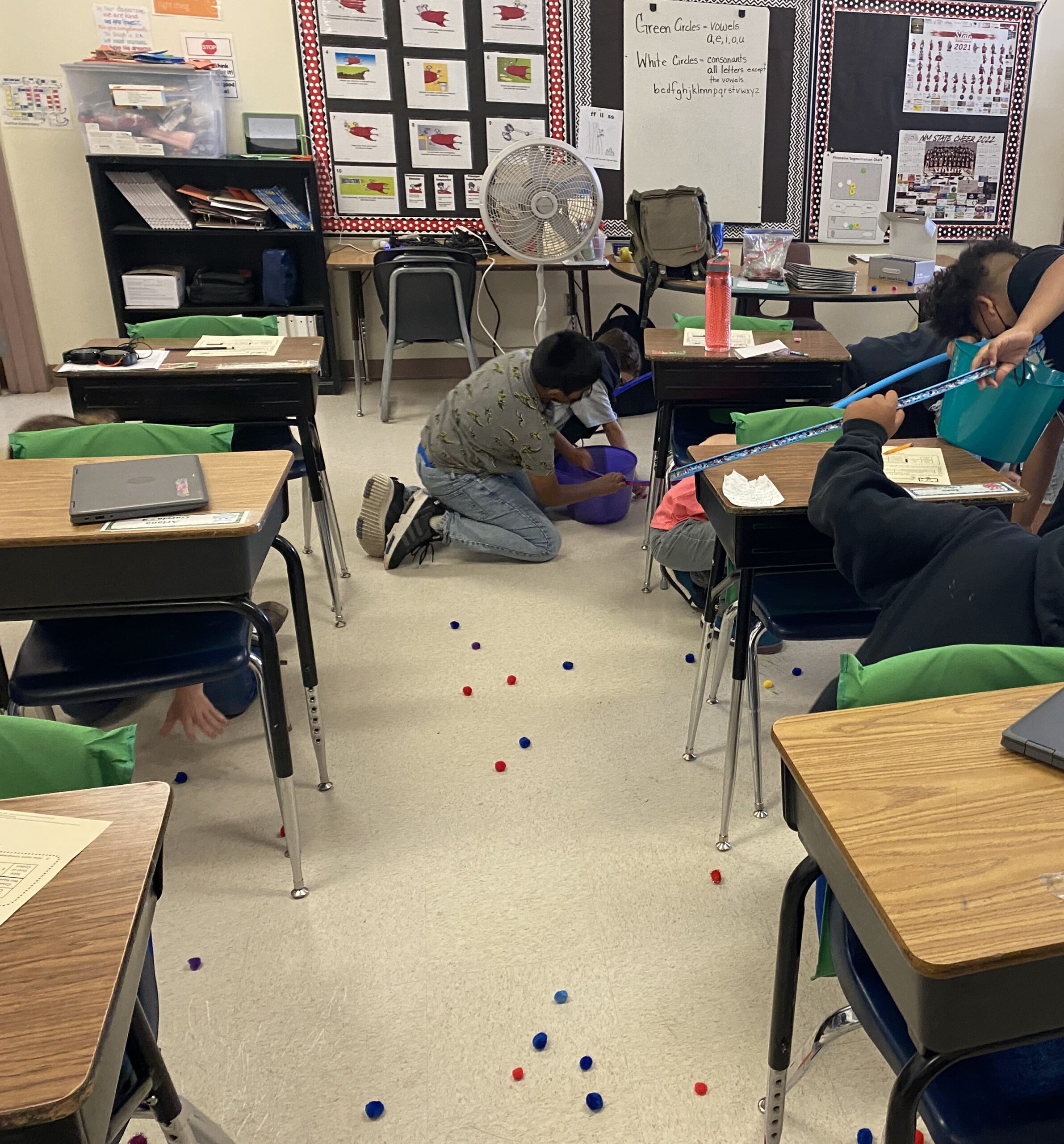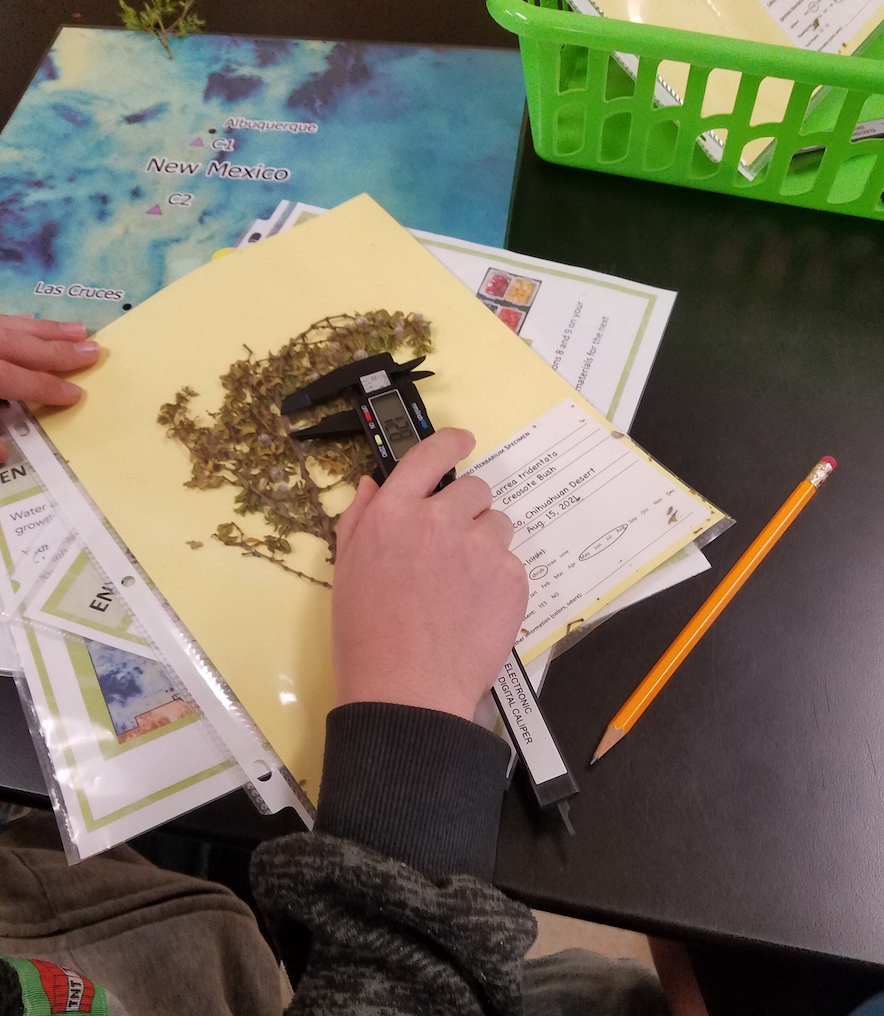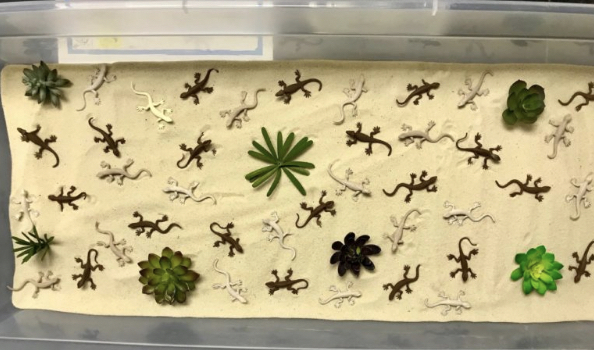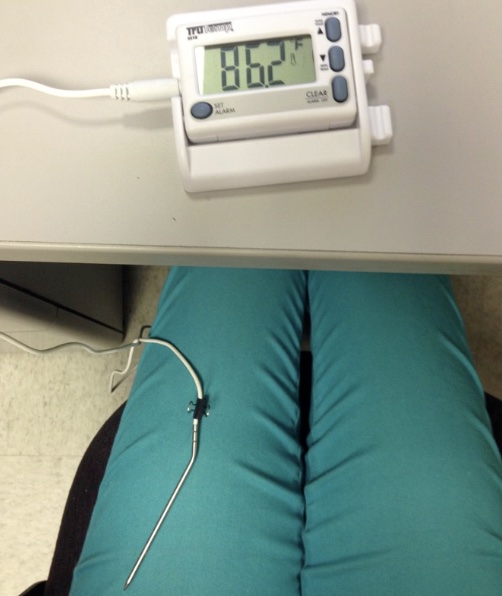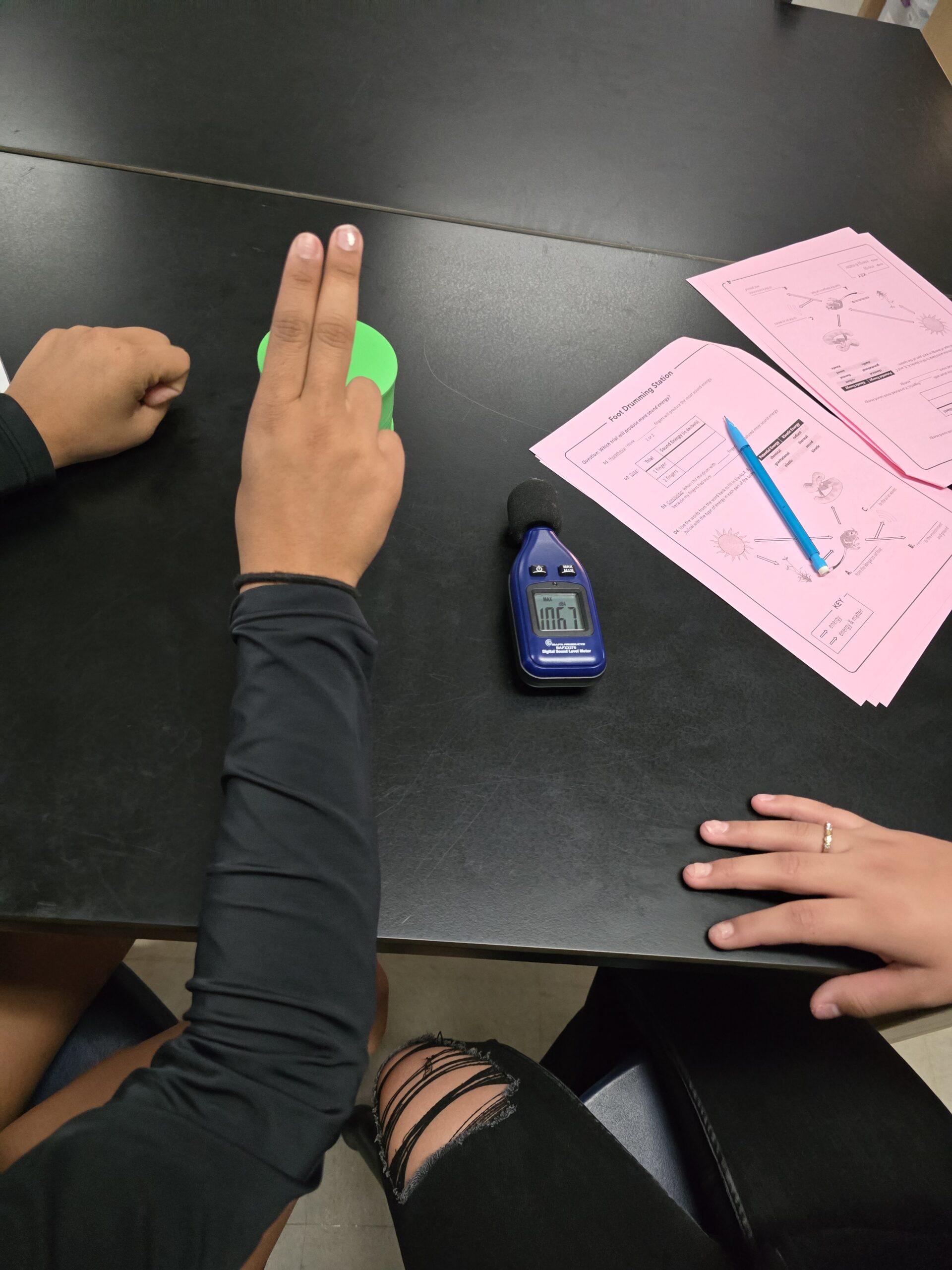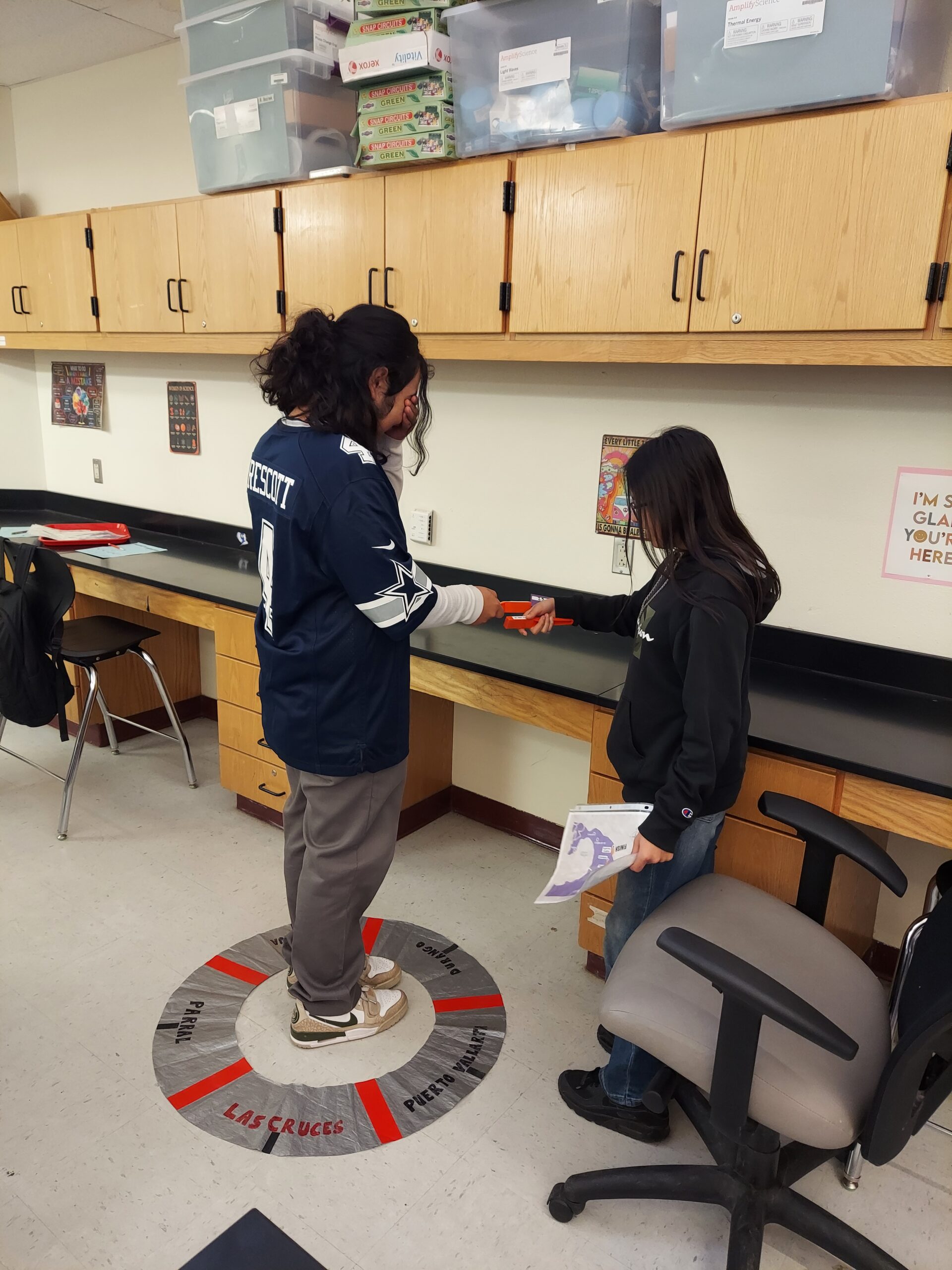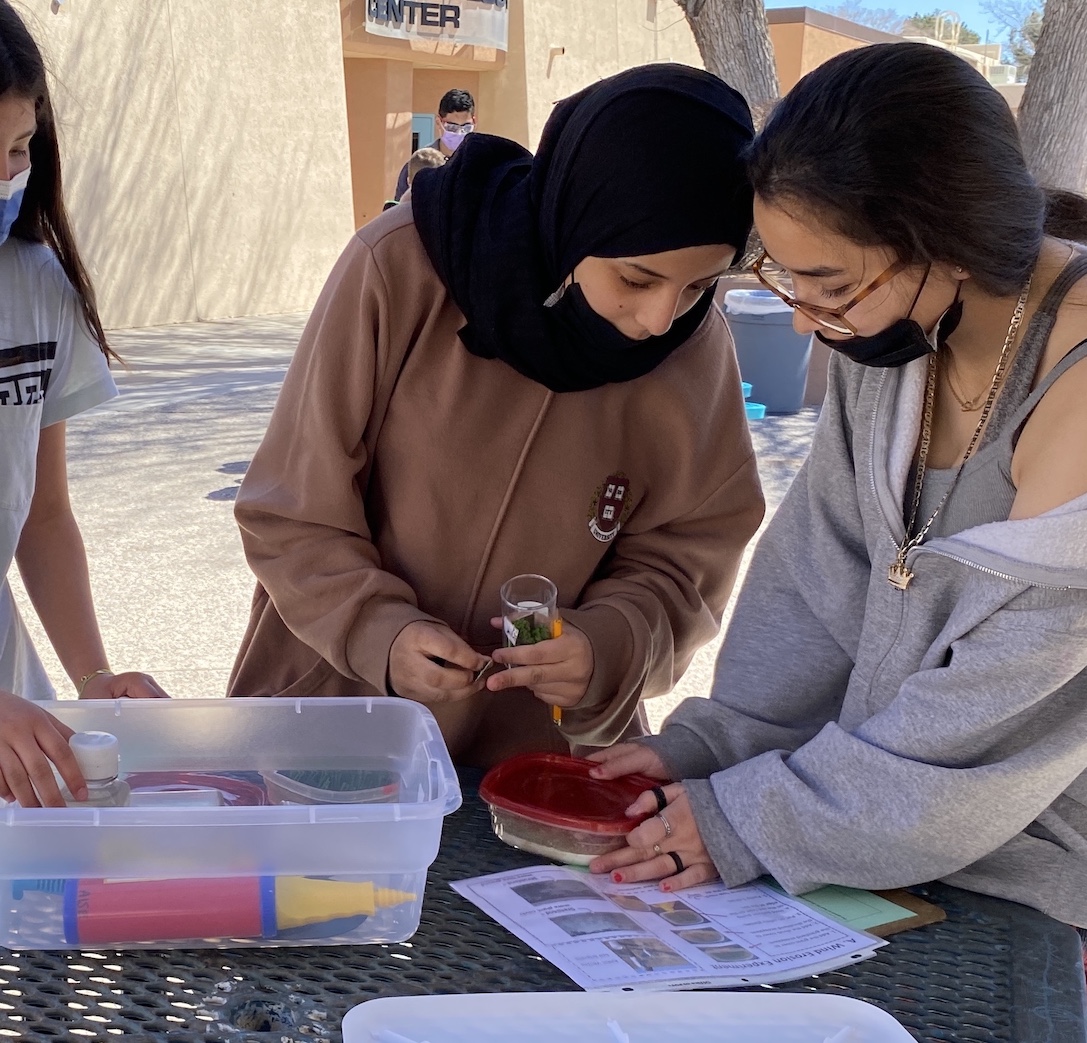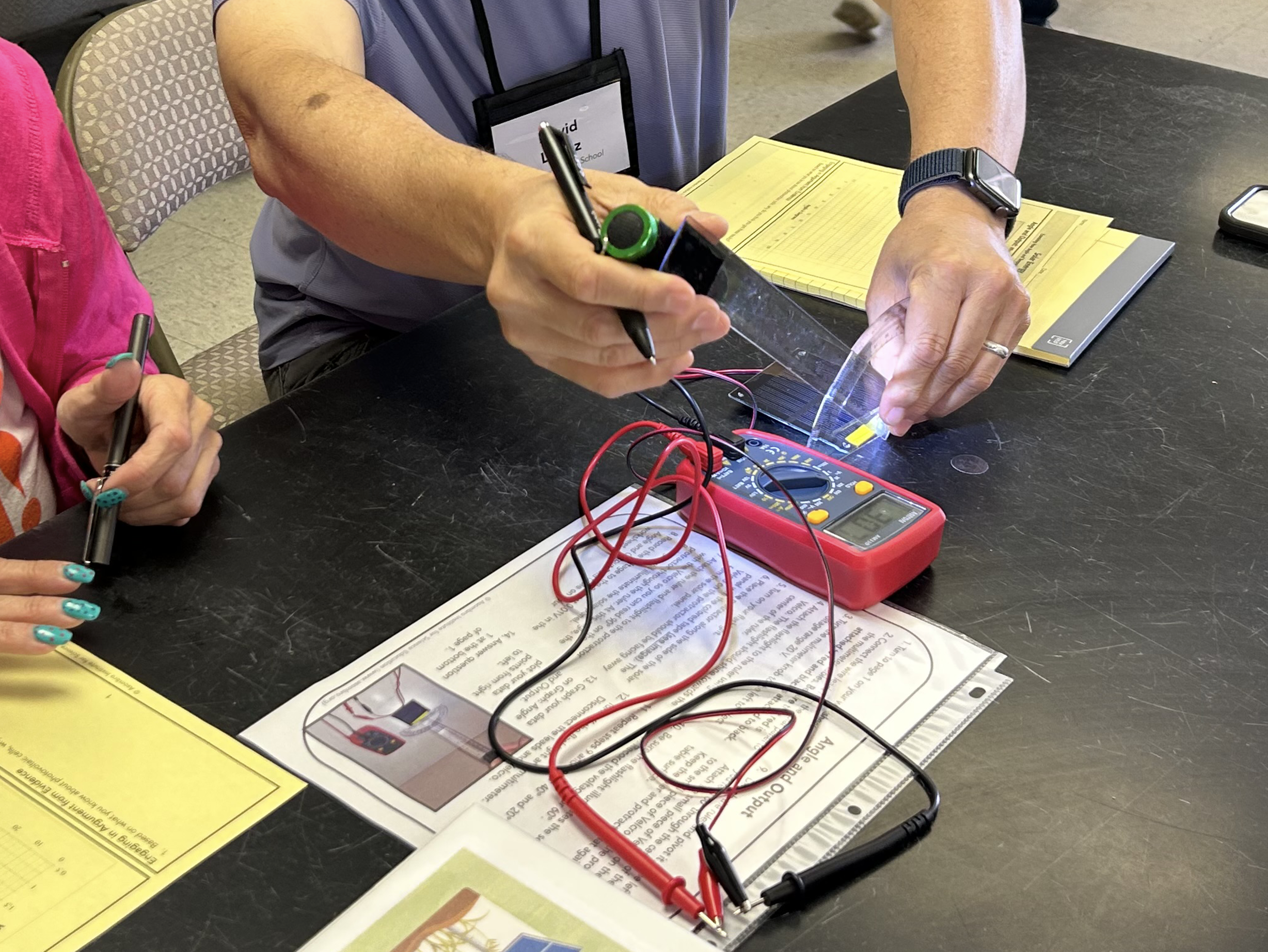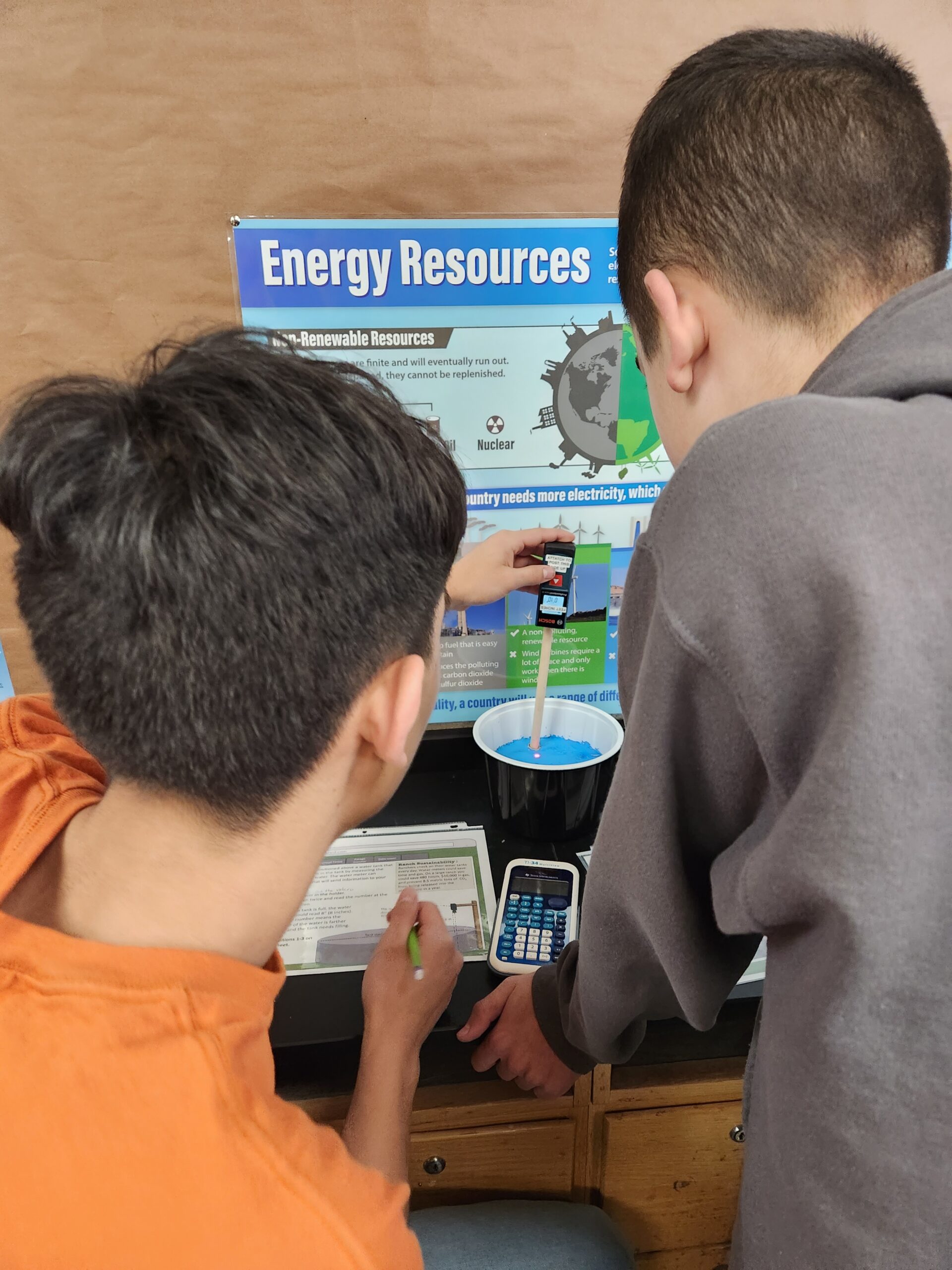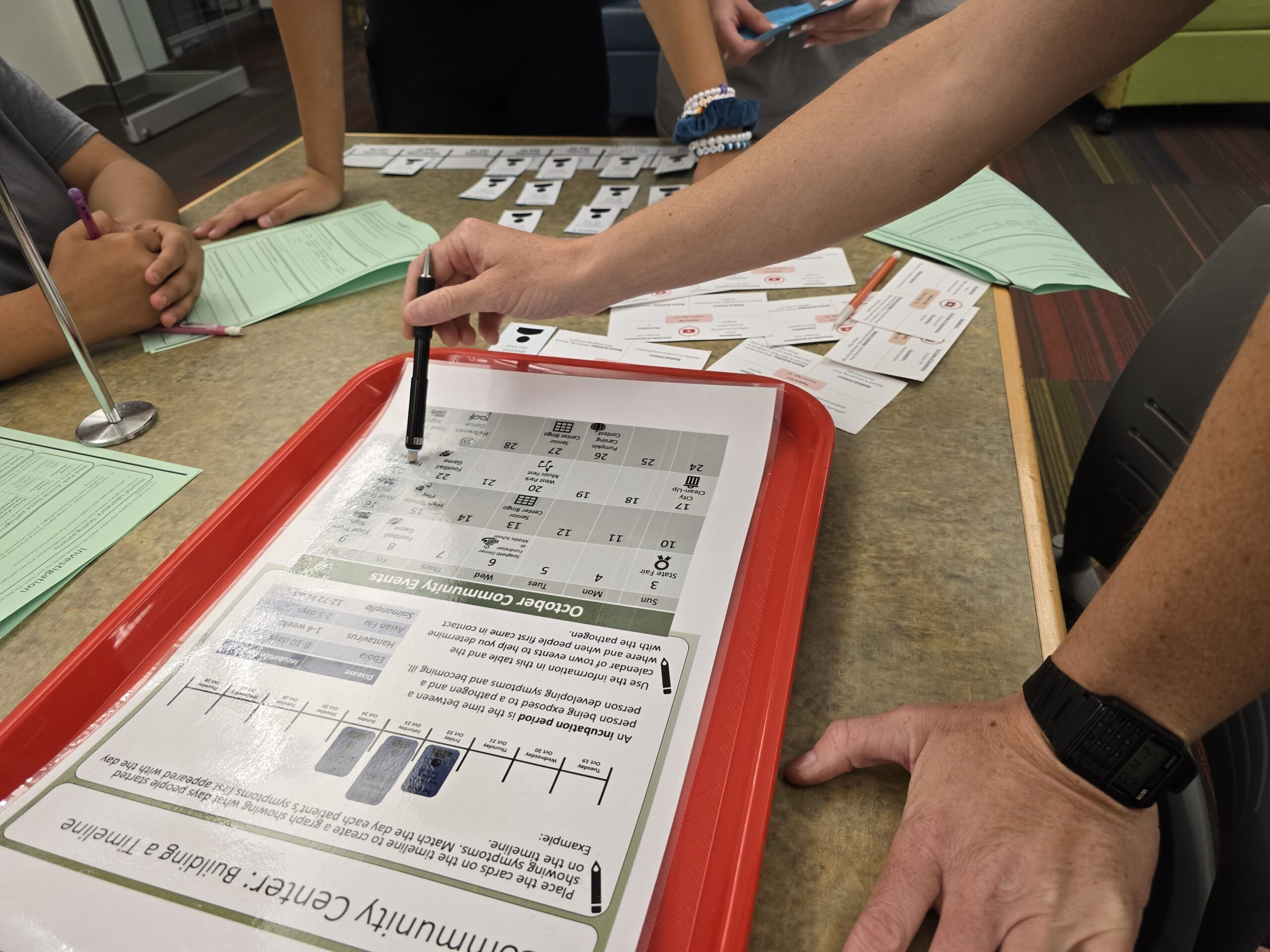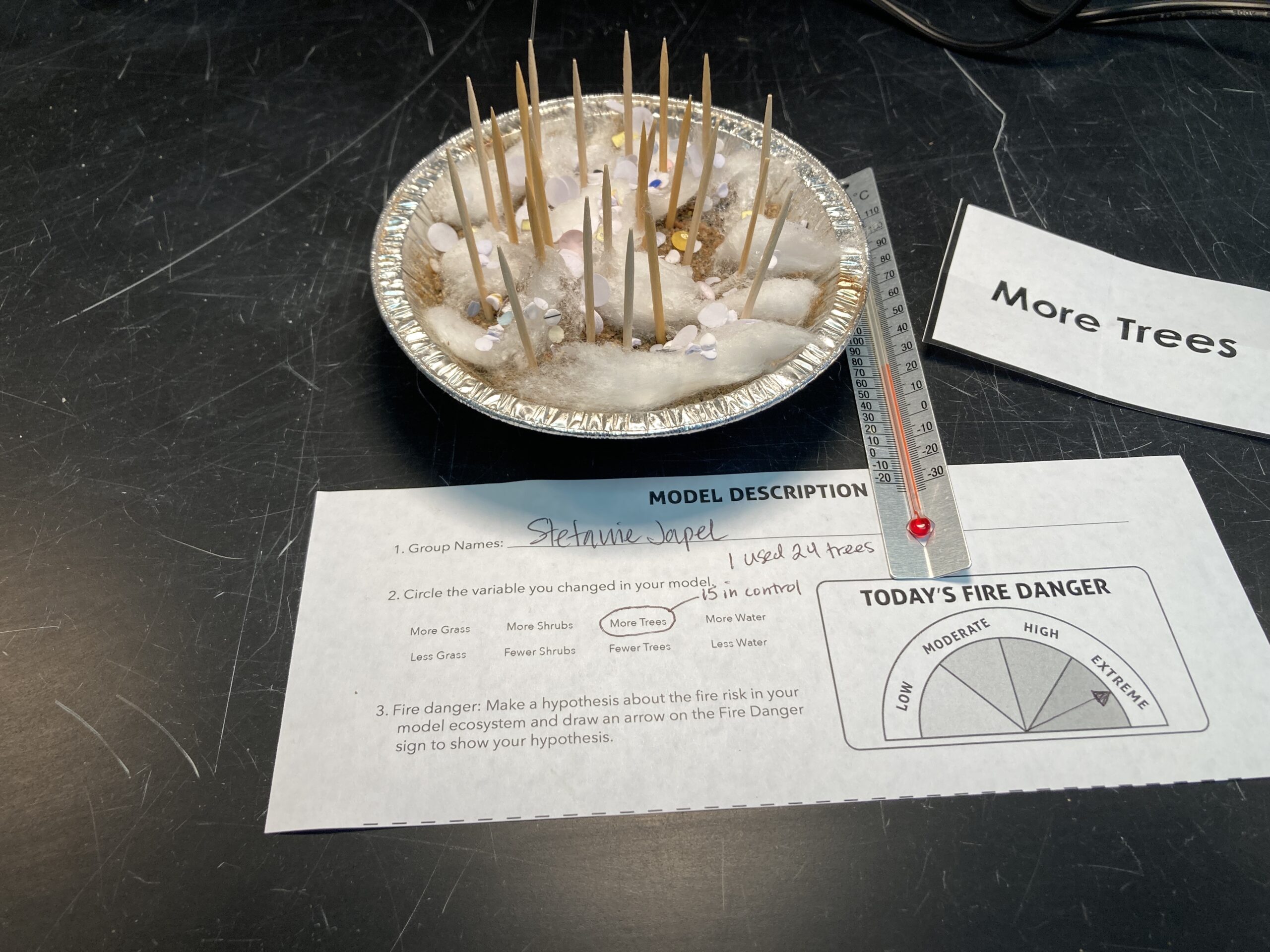Classroom and Schoolyard Programs
Let the Asombro Institute bring the wonder of science to your classroom! During Asombro’s classroom programs, students learn about a variety of science topics through fun, hands-on activities. Programs are aligned with the Next Generation Science Standards and Common Core State Standards. Select a grade below to learn more about our program offerings.
Classroom Programs
- Where: In your classroom
- Cost: Regular price is $100 per lesson, but thanks to the generosity of our supporters, we are able to offer a reduced price of $50 per lesson (additional travel charges may apply for schools outside Las Cruces, NM: $25 + 65 cents per mile)
- Maximum Group Size: 1 class per presentation (exceptions on an individual basis)
- Length: Approximately one hour per presentation
Schoolyard Field Trips
- Where: In your schoolyard
- Cost: $200 (additional travel charges may apply for schools outside Las Cruces, NM: $25 + 65 cents per mile)
- Maximum Group Size: 3 classes per presentation (exceptions on an individual basis)
- Length: 2 hours
Please contact us to request a classroom or schoolyard program.
Apply for a Science Sponsorship
If you are a classroom teacher who would like Asombro to visit your classroom but do not have funds available, consider applying for a science sponsorship by clicking the button below. If selected, teachers receive a free classroom program through a generous Science Sponsor who has donated the funds to cover the cost. To learn more about Science Sponsors, click here.

- All Classroom Programs
- Kindergarten
- 1st Grade
- 2nd Grade
- 3rd Grade
- 4th Grade
- 5th Grade
- Middle School
- High School
- Schoolyard Field Trips
Patterns of Plant and Animal Survival
Using their own observations, students will determine what plants and animals (including humans) need to survive. They will collect data on Chihuahuan Desert plants and animals, both from models and in animal habitats. As a class, they will use data from their observations to find patterns in plant and animal survival needs. Finally, the class will play a “survival game” using their new knowledge and showing evidence of their learning.
K-LS1-1
Who Made This?: How Animals Change Their Environment to Meet Their Needs
Can animals change their environment to meet their needs? Students will meet a live desert millipede and see the structure it built to help it stay sheltered and get food. Then students will use models to match desert animals with the structures they built. In learning more about each animal, students will see how each structure helps provide food, water, or shelter to its maker. Finally, students will be introduced to a new desert animal and construct an argument for how that animal might change its environment to meet its needs.
K-ESS2-2
Cows and Calves
What do Criollo cows do to help their calves survive in the Chihuahuan Desert? Students will learn about Raramuri Criollo cattle, a heritage breed that scientists are researching as a sustainable ranching solution in the dry southwestern United States. Students will discover how Criollo dams, or mothers, help their calves, or offspring, survive. They will conduct investigations to determine different ways Criollo ensure calves survive by studying their behaviors and how data are being collected in New Mexico using precision tools. They will then analyze data they collect to understand how Criollo are well suited to survive in the Chihuahuan Desert.
1-LS1-2
Desert Stories 1st Grade: Learning from Animals
Desert Stories consists of three, hour-long science and literacy lessons delivered by staff from the Asombro Institute for Science Education in your classroom.
Lesson 1 – Students learn about the New Mexico state plant and animals symbols and think about the similarities between plant and animal structures and everyday objects. After reading the book Life in the Slow Lane, students think about how animals would build homes in the desert. They test the strength of building materials and begin designing a desert home.
Lesson 2 – Students compare plant root lengths and investigate how plant roots keep tall plants stable in a yucca bowling game. Then they use animal feet models to dig a hole to compare and evaluate the effectiveness of each foot.
Lesson 3 – Students think about how plants and animals protect themselves through camouflage (animals), and spines and thorns (plants). They use these ideas to add to the home design they started in the previous lessons.
1-LS1-1 and K-2-ETS1.3
Desert Stories 2nd Grade: Seed Dispersal
Desert Stories consists of three, hour-long science and literacy lessons delivered by staff from the Asombro Institute for Science Education in your classroom.
Lesson 1 – Students listen to a reading of Flip, Float, Fly to learn that seeds have different adaptations to help them disperse. They then use adjectives to describe and categorize seeds by their dispersal methods. Finally, students conduct an experiment to determine if animals are a good way to disperse seeds.
Lesson 2 – Students act out a skit by being yucca seeds dispersing to determine if there are enough natural resources for survival. Then students conduct an experiment to see if a yucca seed or a honey mesquite seed is better shaped for wind dispersal.
Lesson 3 – Students listen to Gopher to the Rescue: A Volcano Recovery Story. They then put their knowledge from lessons 1 and 2 into practice as they design their own seed with structures that will help it disperse to an area cleared by a volcano.
2-LS2-2 and K-2-ETS1-2
Schoolyard Habitats and Animal Diversity
Many arthropods are found around the schoolyard. Students will use pitfall traps, a simple tool to collect ground insects and spiders, to investigate types of ground arthropods in two different habitats in the schoolyard and from one habitat in the open desert at the Chihuahuan Desert Nature Park. They will use this information to make predictions about animals and plants.
2-LS4-1
Toad-ally Good Habitat Schoolyard Field Trip
Could there be spadefoot toads living in your schoolyard? We’ll investigate the soil, climate and sounds of the schoolyard to see if our state amphibian could be underground waiting for just the right conditions to come out. Up to 4 classes can participate in this 2 hour outdoor program for 2nd and 3rd grade
Are You This Cow's Herd?
After an introduction to traits and several types of cows, students visit six hands-on stations to gather data to compare a lost cow’s traits to the traits of other cattle types. They analyze and interpret these data to help a rancher reunite the lost cow with her herd.
3-LS3-1
Materials for this lesson are also freely available online and can be accessed here.
¡Criollo! Desert Cattle
After a quick activity that demonstrates the relevance and importance of cattle to human life, students will play an active game that models the foraging behaviors of regional heritage cattle (Criollo) versus those of more recently introduced English breeds (Angus). Following a discussion of traits and inheritance, students will gather evidence to support an explanation of how cattle like Criollo come to have traits that help them survive by breaking into groups to collect data on the geography and climate of the various arid locations where Criollo’s ancestors originated. Finally, students develop a timeline of Criollo history and construct an explanation for the phenomena.
3-LS4-2
Desert Stories 3rd Grade: Yucca and Yucca Moth Life Cycles
Desert Stories consists of three, hour-long science and literacy lessons delivered by staff from the Asombro Institute for Science Education in your classroom.
Lesson 1 – Students receive a “mystery object” (yucca seed pod) and listen to a reading of Night Life of the Yucca: The Story of a Flower and a Moth to determine what their mystery object is. They complete models of the yucca life cycle and the yucca moth life cycle and look for similarities and differences.
Lesson 2 – Students complete a scientific investigation to discover the common number of insect holes in yucca seedpods. They will measure, create graphs, and read and answer questions to better understand their results and conclusions.
Lesson 3 – Students practice skills with a second scientific investigation on yucca roots. They will measure, convert feet to inches, graph, and describe their results and conclusions.
3-LS1-1 and 3-LS4-3
Life Cycles
Students will learn about life cycles in a variety of organisms. They will use models to discover that even though there are differences in life spans of various organisms, all organisms share common life cycle stages, including birth, growth, reproduction, and death. Students will then set up an experiment to help solve a real-world problem involving life cycle stages in mealworms.
3-LS1-1
Plant Traits: Learning From Herbarium Collections
Students will investigate the trait of leaf size in two species of oaks found in New Mexico. They will use their understanding of humidity and stomata on leaves to explain why a species from an area with lower humidity has smaller leaves than a species from an area with higher humidity. Throughout the lesson, they will role-play as botanists working with specimens from an herbarium, learning the importance of natural history collections.
3-LS3-2
Desert Stories 4th Grade: Plant and Animal Adaptations
Desert Stories consists of three, hour-long science and literacy lessons delivered by staff from the Asombro Institute for Science Education in your classroom.
Lesson 1 – Through interactive dress up play, students learn about the adaptations a Kangaroo Rat possesses that allow it to live in a desert environment. They complete a scientific investigation about heat transfer using model Jackrabbit ears.
Lesson 2 – Students will complete short investigations on leaf size, root length, and presence versus absence of spines to better understand the function of common structures of desert plants. They will then apply their understanding of the function of these structures to an Ocotillo to explain how it survives in the desert.
Lesson 3 – Students will apply their knowledge of desert adaptations to new animals and create and present costumes to model these adaptations.
4-LS1-1 and 4-PS3-2
Let It Blow
Students learn about wind erosion in the desert and use a kit of materials supplied by Asombro to test the effects of three different types of ground cover on dust created by wind erosion. They then design and test their own engineering solution to reduce soil erosion by wind.
4-ESS2-1, 3-5-ETS1-1, 3-5-ETS1-2, and 3-5-ETS1-3
Structure and Function of Plants
Students will learn about the structures and functions of plants found in the Chihuahuan Desert. They will investigate the external structures of multiple plant species and discuss their functions in supporting the plants’ survival. Students will develop arguments about a structure of the creosote bush. Then, the class will discuss how the structures function together in a system to support the survival of the creosote bush.
4-LS1-1
Kestrel Habitat Schoolyard Field Trip
Explore your schoolyard as a potential habitat for American kestrels. These small falcons are very adaptable and live in deserts, grasslands and cities, so why is their population shrinking?
Up to 4 classes can participate in this 2 hour outdoor program for 4th and 5th grades
Desert Stories 5th Grade: Playa Food Web
Desert Stories consists of three, hour-long science and literacy lessons delivered by staff from the Asombro Institute for Science Education in your classroom.
Lesson 1– Students meet a mystery animal (tadpole shrimp) and discover it’s identity through reading One Day in the Desert. This book introduces students to playas, temporary desert lakes created by heavy rainstorms. They solve math puzzles to assemble a playa food web.
Lesson 2– Students learn more about producers and decomposers in the playa food web. They investigate where producers get their matter from and how decomposers recycle matter.
Lesson 3– Students break into groups and prepare three mini activity stations that they can teach to younger students to share their new knowledge about playa food webs. Asombro leaves the mini activity kits with you and you arrange a later time to teach younger students.
5-LS1-1 and 5-LS2-1
Mystery Matter
Students gather evidence and conduct investigations to help Ricardo and his grandmother figure out which unlabeled item in the pantry contains the baking soda they need to make cookies. They conduct investigations to determine if unknown materials (powders, minerals, and metals) can be identified based on observable characteristics.
5-PS1-3
Science Interns: Matter
This four-lesson module helps students learn (1) to describe the different states of matter when substances are mixed, (2) to identify materials based on their properties, and (3) that regardless of the type of change that occurs when heating, cooling, or mixing substances, the total weight of matter is conserved. They also prepare to teach three mini-stations to younger students at their school.
Lesson 1 – Students gather evidence and conduct investigations to help Ricardo and his grandmother figure out which unlabeled item in the pantry contains the baking soda they need to make cookies. They conduct investigations to determine if unknown materials (powders, minerals, and metals) can be identified based on observable characteristics.
Lesson 2 – Students use properties of matter to recognize and describe substances before and after mixing. Through investigations they determine whether mixing substances results in new substances and different states of matter.
Lesson 3 – Students are introduced to the phenomenon of the conservation of matter when the shape and temperature of an object is changed.
Lesson 4 – Students plan, outline, and practice their presentations to fellow classmates before they present to the younger students. Asombro leaves the mini activity kits with you and you arrange a later time to teach younger students.
5-PS1-2, 5-PS1-3, and 5-PS1-4.
Where's The Fence?
Virtual fences may be a technological solution that could help ranchers better manage their cows while preventing overgrazing and protecting the land. Students learn about “virtual fences,” a new technology that can help ranchers in the southwestern United States prevent overgrazing and protect the land. They participate in activities and create a persuasive argument to understand what scientists are learning by studying this new tool as a method to protect rangelands from erosion associated with overgrazing.
5-ESS3-1
Human Impacts: Water Use
Students will explore two models of water conservation, while collecting quantitative data on water that is conserved. Students will review the causes of water shortages in New Mexico and craft an argument about water shortages. Lastly, students will work in small groups to design solutions for water conservation in home design.
MS-ESS3-3 and MS-ESS3-4
Creosote Bush Genetics
Creosote bushes are one of the most common plants in North America’s Deserts. However, the shrubs are different sizes and shapes in different locations. Students will use pressed creosote bush specimens to compare shrub size in the Chihuahuan, Mojave, and Sonoran Deserts. Activities will guide students through investigations to determine if the size difference is caused by genetics, the environment or both.
MS-LS1-5
White Sands Lizards
Students move through activities highlighting major stages of evolution by natural selection in the context of blanched lizards at White Sands National Park in New Mexico. They learn that changes in genes lead to different proteins in organisms, that variation in traits may lead to differential survival and reproduction in a particular environment, and that over time, this leads to a change in the frequency of specific traits in a population. Finally, they apply what they learn about blanched lizards at White Sands to explain the process of natural selection in rock pocket mice at the Valley of Fires in Carrizozo, NM.
MS-LS3-1
MS-LS4-4
MS-LS4-6
Insulating You, Insulating Earth
To understand how increases in greenhouse gases in the atmosphere increase global surface temperatures, students will model the natural and enhanced greenhouse effect. Students conduct an experiment using their own body heat, thermometers, towels, and mylar blankets.
MS-ESS3-5
Energy Transfers Around a Kangaroo Rat
Students trace the transfer and transformation of energy as it flows through a small section of the desert food web centered on a kangaroo rat. They learn about energy as a crosscutting concept, applying “physical science” concepts of kinetic and potential energy to “life science” concepts like photosynthesis, metabolism, thermoregulation, and movement of organisms.
MS-PS3-5
Magnets and Migration
Students will apply their knowledge of magnetic fields to learn about current research on animal navigation. A magnetic field investigation shows that magnets can exert a force without touching another object. Then students will model how animals may use Earth’s magnetic field to navigate over long distances with specialized body parts that allow them to see and feel magnetic fields. Finally, students will evaluate the design of experiments scientists are using to test magnetoreception in butterflies.
MS-PS2-5
Restoring Connections (Schoolyard)
Students examine photos to discover that parts of Chihuahuan Desert have changed from a grassland to a shrubland ecosystem. After participating in an interactive game, students will explain that drought and grazing by livestock are two of the causes of shrub encroachment. Students use models to show how shrub encroachment causes increased erosion which exposes the hardened caliche layer. They will use aerial photos to estimate percent shrub cover and determine that a shrubland habitat is unsuitable for a keystone species – the banner-tailed kangaroo rat. After learning about the effects of shrub encroachment, students construct an argument to explain how a part of the ecosystem is impacted by this change.
MS-LS2-4
This lesson may be followed by a field trip to the Chihuahuan Desert Nature Park. Learn more here.
Agrivoltaics: Engineering Sustainable Solutions to Food and Energy Production
This three-lesson module introduces students to agrivoltaics, the dual-use of land for agriculture and solar energy production. In these lessons, students will apply science and engineering practices and crosscutting concepts through an agricultural lens and consider the pros and cons of implementing agrivoltaics as a solution to extreme heat and drought.
Agrivoltaics Scenarios- The pros and cons of using land for agricultural and energy production: Students will analyze the pros and cons of adding solar panels to farms and ranches in different locations and with different agricultural products.
Made in the Shade: Students will use a model solar panel and spinach leaves to test the effects of shading from a solar panel on plant transpiration. They will use solar beads and a flashlight to investigate the potential effects of solar panels on photosynthesis.
Solar Energy: Students play the role of solar engineers as they test two factors that can affect solar panel efficiency: air temperature and angle of sunlight.
MS-ETS1-1, MS-ETS1-2, and MS-ESS3-3
These lessons can be completed as a suite of three classes, or as standalone lessons.
Precision Ranching Tools
Students learn about current research into technology that could make ranching more economically and environmentally sustainable in the Southwest. Students will model several technologies, consider the pros and cons of each and make a case for which are most useful.
HS-ESS3-4
Zoonotic Disease Transmission Mystery
Students learn that pathogens cause diseases and can move between animal and human populations in a variety of ways. Students play the role of public health scientists and are tasked with identifying the pathogen making people ill and determining the source of this outbreak. Students will read, gather data, and think critically about the clues they have collected and write a report to city officials detailing their results. Students will be asked to consider the likelihood of future outbreaks of zoonotic diseases and brainstorm solutions to mitigate this problem.
This lesson addresses several NGSS SEPs, CCCs, and DCIs LS2.C and LS4.D
Wildfire Past and Future
In this lesson exploring the impacts of climate change students build model ecosystems and place them under heat lamps. Students can vary the amount of vegetation or water in their ecosystem to investigate the impacts of varying fuel and moisture levels. As a class, set each ecosystem on fire to see how climate change has affected fire risk.
This lesson requires access to an outdoor space or fume hood.
This lesson addresses several NGSS SEPs, CCCs, and DCIs LS2.C

